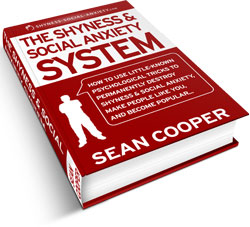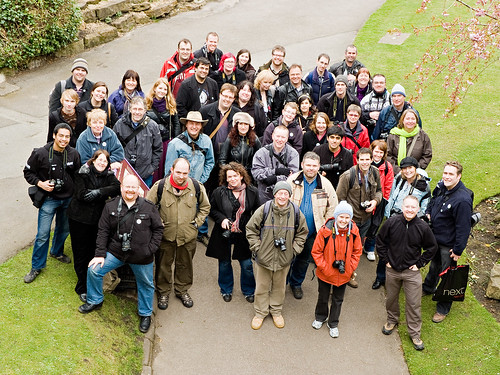
Many people try to make shyness seem like a cute and innocent trait to have.
Nevertheless, if you are shy and you know firsthand how shyness can disrupt your social life, you probably find it hard to view it that way. And if you have more than shyness, if you have social anxiety, the upheaval it breeds is even worse.
Well, today I’m going to let you know about an excellent ebook for people with shyness or social anxiety that I’ve reviewed and I sincerely recommend.
The Shyness and Social Anxiety System
The ebook is called The Shyness and Social Anxiety System. Its author, Sean Cooper, presents in it effective and little-known psychological techniques to destroy shyness and social anxiety.
You can get the full details about the ebook here.

I had an interesting conversation earlier this week with Sean about the way this book was born. Sean fought with shyness and social anxiety for many years. After loads of research and personal experimentation, he eventually discovered how to overcome shyness and implemented this psychological know-how successfully.
As a former shy, “invisible” guy myself, I find something fascinating in what Sean teaches in this ebook because you can tell he’s been through it, he knows personally what it’s like to have shyness and social anxiety, and he grasped how to beat it.
I think this is something few people who give advice on this topic can say. Many of them don’t really understand what it’s like to be shy; they just know part of the theory. As a consequence, a lot of the advice on how to overcome shyness is insipid and trite: “Just be yourself”, “Just do it”, etc. Yeah right!
I talk in more depth about this and issue and about the real science of social confidence in this free presentation.
My Review of the Ebook
I was pleasantly surprised by The Shyness and Social Anxiety System. It presents a both cognitive and behavioral approach to boosting social confidence, with a bit more focus on the behavioral part.
The ebook is extremely simple to read, to understand and most importantly, to apply. It contains ideas and techniques for beating shyness that you can take immediately and start applying, and you’ll see results.
On top of that, I find these ideas to be highly consistent with the scientific psychological research in this area, which is something I’m big on.
The Shyness and Social Anxiety System got me realizing things I wasn’t aware of about overcoming shyness. This is probably the finest proof I can give of the quality of this ebook, considering that I coach shy people almost on a daily basis and I believe I know a thing or two about overcoming shyness.
To conclude this review, if you struggle with shyness or social anxiety, coaching is out of your financial range and you’re looking for a quality information product to help you make real progress, this ebook is it.
Check out The Shyness and Social Anxiety System here.
Also, check out my Conversation Confidence guide here.
Shyness is a serious psychological issue to deal with and it can be dealt with successfully. But you need to use the best tools available.
Image courtesy of Ed Yourdon




 There is one way to make people like you that’s very popular and I’m adamantly against. That is being really nice with people and doing nice things for them all the time. Sure, you can get some people’s approval be being a
There is one way to make people like you that’s very popular and I’m adamantly against. That is being really nice with people and doing nice things for them all the time. Sure, you can get some people’s approval be being a 